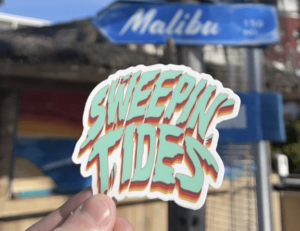Tag: ocean
Harmful Algal Bloom Threatens Marine and Human Health
by Kaelin Ferland '23 on March 16, 2023
Opinion Staff
Featured Slider
Florida’s Red Tide
In October, a harmful algal bloom was detected in Florida. However, the red tide has recently become significantly more dangerous. Since then, the red tide has dispersed its red waters to the entire southwest coast of Florida, spanning 5,000 miles and devastating marine ecosystems. Since Dec. 12, 2022, 20 tons of fish have been found beached along the coast. It’s estimated that 104 sea turtles and seven manatees have also died. Human health is similarly at risk with some Florida residents reporting coughs, difficulty breathing, and burning of the eyes. The red tide is not expected to end in the near future, with conditions expected to worsen before they improve.
Harmful algal blooms are formed when algal growth increases exponentially. Usually, algal blooms aren’t harmful, serving as a food source for animals that rely on them. However, harmful algal blooms, as the name implies, produce toxins that threaten both wildlife survival and human health. If humans inhale these toxins, they will enter the body and cause a variety of health issues including coughing, difficulty breathing, and eye and skin irritation. If contaminated fish are consumed, however, the human health effects can be much more severe, leading to multiple forms of shellfish and fish poisoning illnesses including paralytic shellfish poisoning and neurotoxic shellfish poisoning.
The animal health effects are very similar to those experienced by humans. Harmful algal blooms affect not only fish but also marine mammals and seabirds. Fish and shellfish are part of the diets of many marine species, including dolphins and seabirds. This means that, like humans, these organisms are ingesting toxins by eating contaminated fish. Marine mammals, specifically ones like dolphins and manatees that require oxygen, can also inhale toxins when they visit the surface to breathe, leading to respiratory problems.
A main factor that leads to harmful algal blooms is climate change. Blooms begin to form when there are more nutrients in the water. Nutrients usually enter water via runoff following periods of precipitation. As climate change increases the severity and frequency of weather events, precipitation and runoff will become more common, fueling more harmful algal blooms. Increases in carbon dioxide in our atmosphere also promote algal growth as algae are a plant species that relies on photosynthesis. Increased temperatures are also optimal for algal growth which will become more common due to global warming. Usually, the winter weather moves algal blooms away from the coast. However, as climate change makes our winters milder, this allows harmful algal blooms to persist and cause further damage.
Climate change continues to have a relationship with the most devastating environmental issues we are witnessing today. Actions need to be taken to mitigate climate change and prevent subsequent environmental catastrophes.
Keeping the Coasts Clear: PC Student Helps in Fight Against Pollution
by The Cowl Editor on April 22, 2021
Features

by Kyle Burgess ’21
News Co-Editor
As the old adage goes, “If you do what you love, you’ll never work a day in your life.” For Providence College students like Charles “Fred” Manoog ’23, this phrase was more than just a job-hunting cliché. Instead, Manoog decided to make the most out of his passion by turning it into a business opportunity.
Manoog first discovered PC through his uncle who himself is a PC alumnus. During the college applications process, his uncle insisted that he include Providence College on his list despite Manoog’s uncertainty about it. However, all he needed was one visit to know for sure that he was in the right place.
“When I toured it was a beautiful day and all the students were outside hanging out, it gave off a great vibe that I knew I wanted to be a part of,” Manoog explained. “I then decided to apply early decision and got in, I love it so much here.”
In addition to spending time with his friends at PC, one of Manoog’s other strong passions is his love for the ocean. In addition to surfing, Manoog spends his summers as a lifeguard back home. While working as a lifeguard in Cape Cod with his cousin and best friend, he witnessed large amounts of trash washing up on the beach. This did not sit well with Manoog who, along with his cousin and friend, decided to do something about preventing further pollution.
Together, the three young men formed Sweeping Tides. Sweeping Tides is an apparel company that specializes in surf apparel with 5% of purchases going towards Oceana, the largest international advocacy organization dedicated to ocean conservation.
“I have been affiliated with it since the beginning since I am one of the co-founders,” Manoog said. “It has been a great experience for me to watch a business grow.”
The end goal for the founders of Sweeping Tides is to expand their catalog of items for potential buyers in the near future. They hope to eventually sell hard-goods like surfboards and wetsuits. Should that not work out as planned, then they are just as satisfied to continue their apparel brand and gain greater community involvement in the conservation effort.
For Manoog and his fellow co-founders, profit was never a priority as much as bringing attention to the fight to keep oceans clean. “We are all surfers so we are very passionate about the ocean and taking care of it. We wanted to start a way to help keep it clean.”
Following graduation from PC, Manoog sees himself moving to the coast or Hawaii, working for either a large surf company or an ocean conservation brand. For now, however, he is thankful to combine his passion for the ocean with a platform that enables him to work in the field he loves so much.
